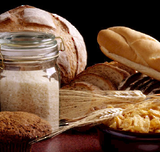Guide to baby-led weaning
|
Keen to give baby-led weaning a go? Or you've heard of baby-led weaning, but not quite sure what's involved? Our quick guide will get you started with suggestions on when to start baby-led weaning, foods to try, preparing for the mess and reasons why baby-led weaning may not be suitable for your baby.
|
You might also be interested in ...
Introducing goat’s milk to babies & toddlers
In New Zealand cow’s milk is recommended as part of a child’s daily diet from one year’s old due to the calcium, vitamin D and fat content. Increasingly though parents are looking for alternative options. One option is goat’s milk. Find out about the benefits of goat’s milk, goat’s milk formula and things to consider before introducing goat’s milk to your little one’s diet.
Spotting food intolerances in young kids
Would you know if your child had a food intolerance? Food intolerances and food allergies are fairly common these days, so it's important to have some understanding of certain food groups and how they could affect your child. We look at the most common food intolerances, how to identify food intolerances and the difference between food intolerances and food allergies.







Keen to give baby-led weaning a go or you've heard about it, but not quite sure what's involved?
Our quick guide will get you started with suggestions on when to start baby-led weaning, foods to try, preparing for the mess and reasons why baby-led weaning may not be suitable for your baby.
Guide to baby-led weaning
1. So what is baby-led weaning?
2. When should you start baby-led weaning?
3. Foods to try when starting baby-led weaning
4. Prepare for the mess with baby-led weaning!
5. Relinquish control when it comes to baby-led weaning
6. Reasons why baby-led weaning may not be suitable
Talk to your doctor or health specialist before trying baby-led weaning, especially if any of the following apply to you:
7. Research on baby-led weaning in NZ
At this stage very little research has been done on baby-led weaning worldwide.
Before the NZ Ministry of Health can ‘recommend’ baby-led weaning to the public as a safe alternative to current advice, it needs evidence that baby-led weaning doesn’t lead to babies being iron-deficient, not growing well, or having an increased chance of choking.
The Ministry needs evidence of the benefits (eg, preventing obesity) before it can recommend baby-led weaning as the best weaning practice for babies in this country.
More research is being done on baby-led weaning and the Ministry will review this as it becomes available.
More weaning articles for you to enjoy:
- The ins and outs of weaning babies
- Starting solids
- When can babies eat eggs
Image source: noahsdad.com